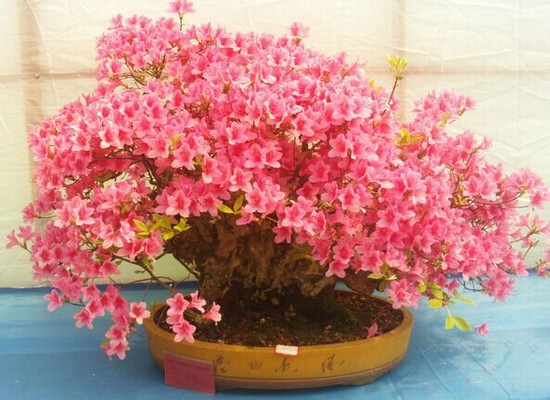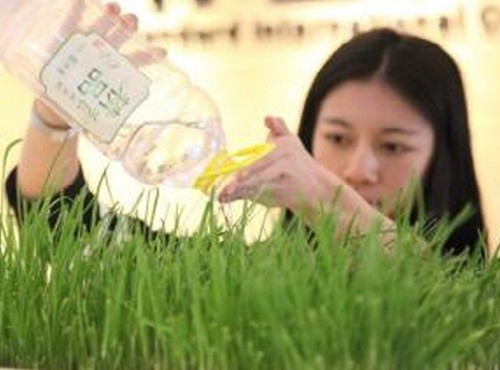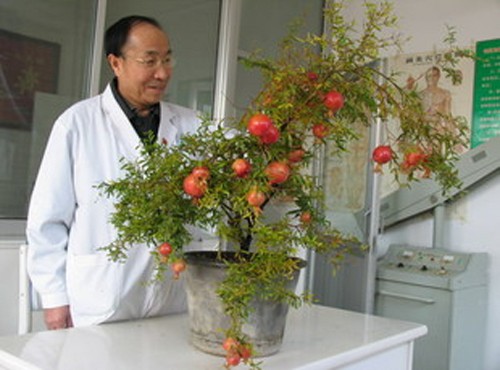Key points of cultivation techniques and matters needing attention of Rhododendron bonsai
Rhododendron likes cold and cool, and avoids hot sun. The growth temperature is from 15 ℃ to 25 ℃. Most varieties can withstand the low temperature of minus 8 ℃ to 12 ℃. Garden cultivation should be arranged under the forest and beside the valley. too strong light is easy to cause leaf yellowing, anti-curling and poor growth. lack of light affects flower bud differentiation and flowering quantity, and the soil is better in acid humus soil. Cuckoos like rainy, foggy environment, avoid waterlogging, planting land should have a certain slope, stagnant water is easy to cause rotten roots. Rhododendron roots are shallow and dense, so do not plant too deep when transplanting, otherwise the recovery period will be long and the growth will be slow. After a few years, the old roots will gradually rot, and new roots will grow again from the topsoil layer, forming "multi-layer roots".

Key points of Rhododendron bonsai cultivation techniques:
1. Picking piles: although Yingshanhong varieties are common, how long a good pile head is in a place where it is difficult to pick, we must carefully dig, protect the root system, pile mass is slightly larger, with primary soil (symbiotic bacteria). Dig before and after flowering.
2. Pile repair: slightly larger piles will be trimmed according to the needs of cultivation, and branches will be cut once. The roots and branches should be sealed to prevent shrinkage.
3. Planting: disinfect with soil first, plant with loose and plain soil, it is best to go to the ground, and then plant the soil according to the habit after the root system is cultivated (about one year); place according to the habit. Keep alive in the first year, root in the second year, tree in the third year, and pot in the fourth year.
4. Fertilizer and water: do not use fertilizer in the first year, use less fertilizer in the second year, use fertilizer normally in the third year, and apply thin fertilizer frequently. The whole process moisturizing management.
In the garden layout, rhododendron can be cultivated in a large area according to the growth habits of different species according to the mountain, stone and water, so as to create a garden atmosphere of "natural simplicity, elegant and elegant, winding path". To form a landscape landscape coordinated with the local natural environment. According to the differences in shape and color of azaleas, mixed planting of many kinds of trees and shrubs can be used to form garden groups with scattered elevations and distinct planes, and azaleas can be closely planted in the foothills of hills by imitating natural growth. to form rhododendron mountain, rhododendron ridge, rhododendron valley and other landscapes.
Points for attention in the cultivation of rhododendron bonsai:
1. Like yin and fear yang, strong light is easy to burn, but excessive shading will cause poor growth and flower buds are not easy to form.
2. The pH value of acid-loving soil is about 6; when the alkalinity is too strong, the soil will gradually wither and wither, and even die.
3. Due to physiological iron deficiency, chlorophyll synthesis is affected, and the leaves will become smaller and yellowish-white.
4. Generally able to withstand low temperature below 10 ℃, but because the roots of rhododendron are shallow and thin, close to the topsoil, they can not withstand the heat.
5. Due to the slender root system, poor water absorption and supply capacity, and fear of drought and waterlogging, it can only grow well when the air humidity is 70% to 90%.
6. Watering should be appropriate. If the surface is wet and dry, the root system will be damaged and the old leaves will fall early; if the stagnant water rotten the roots, the new leaves will be white and yellow; the flowering period will be short of water and the petals will droop; when the leaves are short of water, the heart leaves will curl and the leaves will turn yellow.
7. Lack of nitrogen fertilizer, thin leaves, thin branches, few flowers; lack of phosphate fertilizer, some leaves are reddish purple and easy to fall; lack of potassium fertilizer, old leaves are gray-green, leaf margin is yellow-green, leaves appear spots, and finally turn brown, even scorched and fallen leaves.
8. If the fertilizer is too thick and sufficient, it will cause the phenomenon of reverse osmosis, the fibrous root will atrophy due to water loss, the leaf tip and leaf edge will lose luster, and gradually zoom and fall off.
9, poor ventilation, air occlusion, resulting in fallen leaves.
10. For fear of snow and frost, it is appropriate to overwintering at about 8 ℃; if the room temperature is too high to dormancy, the physiological activity does not decrease, and continue to consume a large amount of nutrients, it is disadvantageous to the growth and development of the following year.
Time: 2019-05-25 Click:
- Prev

Yellow leek bonsai with the integration of art and food
As the saying goes, there is no Chinese New year without leek. Yellow leek is often used as stuffing, with diced meat or eggs, making pies, making dumplings, making steamed buns and so on. Yellow leek dumplings, eat in the mouth, the fragrance to the nostrils, endless aftertaste. Also used as a seasoning spice, but also can be fried, boiled, cold, oily, tender, fragrant and delicious, making the aftertaste of lips and teeth hard to finish.
- Next

How to cultivate pomegranate bonsai
For thousands of years, wild pomegranate has been cultivated and domesticated, forming two categories: one is ornamental flower pomegranate, the other is edible fruit pomegranate. There are two kinds of flowers and pomegranates for viewing flowers and fruits, but they are mainly famous for their colorful flowers. Especially when the spring is fading away and the flowers are fading away.
Related
- Fuxing push coffee new agricultural production and marketing class: lack of small-scale processing plants
- Jujube rice field leisure farm deep ploughing Yilan for five years to create a space for organic food and play
- Nongyu Farm-A trial of organic papaya for brave women with advanced technology
- Four points for attention in the prevention and control of diseases and insect pests of edible fungi
- How to add nutrient solution to Edible Fungi
- Is there any good way to control edible fungus mites?
- Open Inoculation Technology of Edible Fungi
- Is there any clever way to use fertilizer for edible fungus in winter?
- What agents are used to kill the pathogens of edible fungi in the mushroom shed?
- Rapid drying of Edible Fungi

